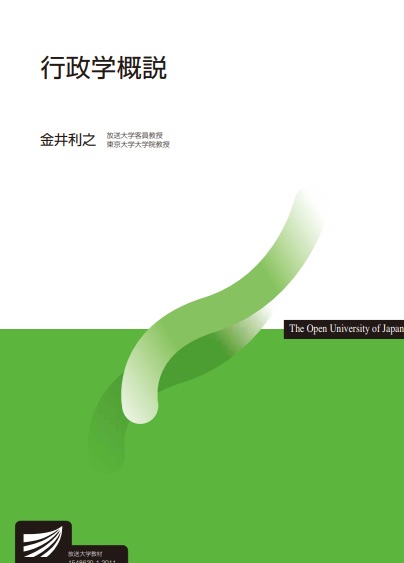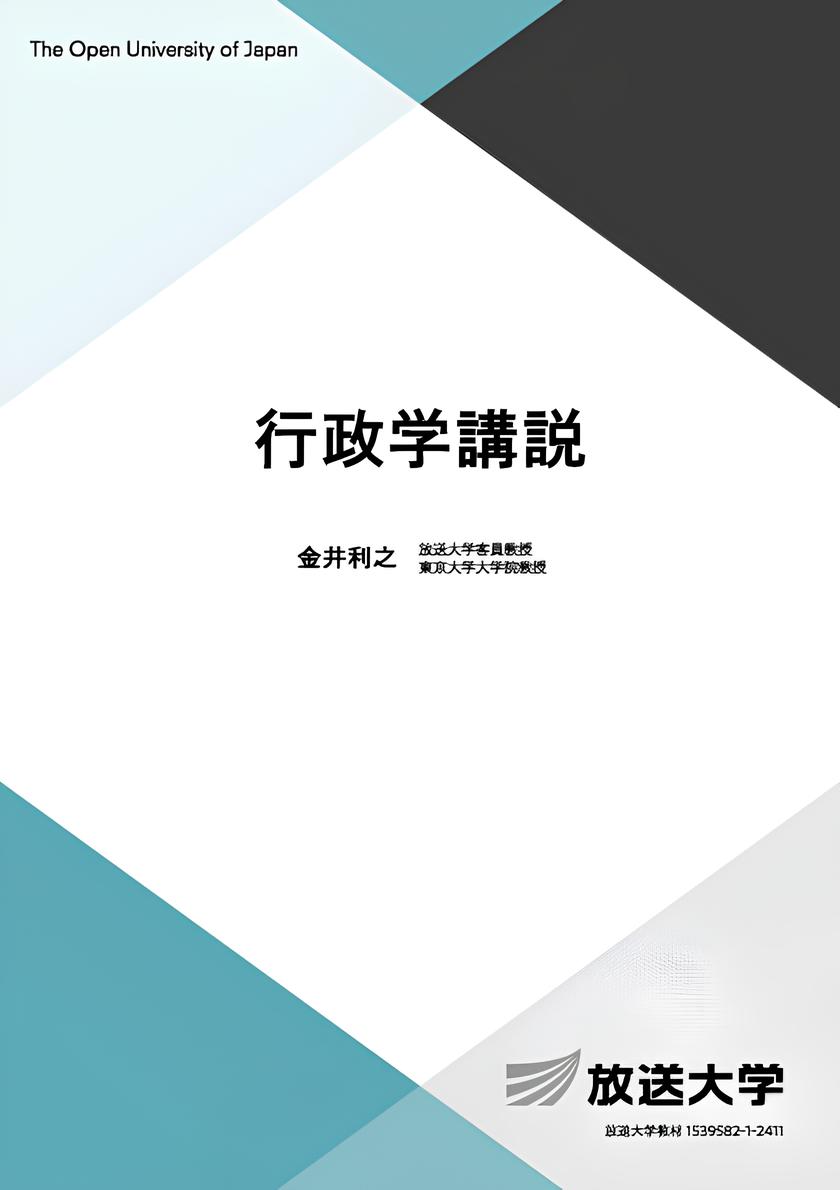
Title
Gyosei-gaku Gaisetsu (Introduction to Public Administration)
Size
298 pages, A5 format
Language
Japanese
Released
2020
ISBN
978-4-595-32205-1
Published by
Foundation for the Promotion of The Open University of Japan
Book Info
See Book Availability at Library
Japanese Page
This is a broadcasting material for “The 2020 Introduction to Public Administration” course offered by the Open University of Japan (for undergraduate students of radio). Many educational materials used by the Open University of Japan have hitherto been revised and published as textbooks. For example, Masaru Nishio’s Public Administration (Yuhikaku’s first version appeared in 1993 and the revised version in 2001) was based on two broadcasting materials: Public Administration (Foundation for the Promotion of the Open University of Japan, 1988) and Administrative Activities (Foundation for the Promotion of the Open University of Japan, 1992). In this sense, these materials may be seen as interim prototypes which are expected to be revised in the future in view of lectures at the Open University of Japan and feedback from students, rather than as finished works in their own right.
This book is quite different in structure from many other textbooks and systematic books on public administration. Specifically, the author identifies fifteen characteristics of public administration: relativity, spatiality, timeliness, authority, distinctiveness, professionality, confidentiality, legitimacy, autonomy, validity, fairness, democracy, representativeness, neutrality, and responsibility, and discusses public administration from each perspective. It can be viewed as a book which reorganizes various concepts discussed by Masaru Nishio, not in his textbook but in his collection of papers, Gyoseigaku no Kiso Gainen [Basic Concepts of Public Administration] (University of Tokyo Press, 1990).
On the other hand, the three perspectives of public administration proposed by Masaru Nishio, namely the theory of institution, theory of management, and theory of policy, are not explicitly presented. There is no formal explanation on the organizations and institutions of public administration (such as the cabinet and government ministries and agencies), no formal analysis on the mechanisms and operations of administrative management (such as budgeting and personnel management), and no formal discussion on decision-making and policy processes. Therefore, the book is somewhat difficult to read for those who want to know the basic institutions and management mechanisms of public administration. However, many readers do not expect the book to offer specialized knowledge of administrative institutions and mechanisms. Moreover, such knowledge is commonplace for those who work as government officials, and is naturally gained by private firms, researchers, non-profit organizations and citizens groups that negotiate with public administration. Rather, the aim of this book is to get to the hidden essence of public administration by showing the structural characteristics under its surface.
This book explains the administrative institution, management and policy in an original way. For example, the civil service system and personnel management is one of the core mechanisms of institutions and management affairs and is mentioned in various characteristics, such as authority, professionality, legitimacy, autonomy, representativeness, and neutrality. Thus, the book does not largely miss topics to be described in a textbook.
(Written by KANAI Toshiyuki, Professor, Graduate Schools for Law and Politics / 2021)



 Find a book
Find a book



